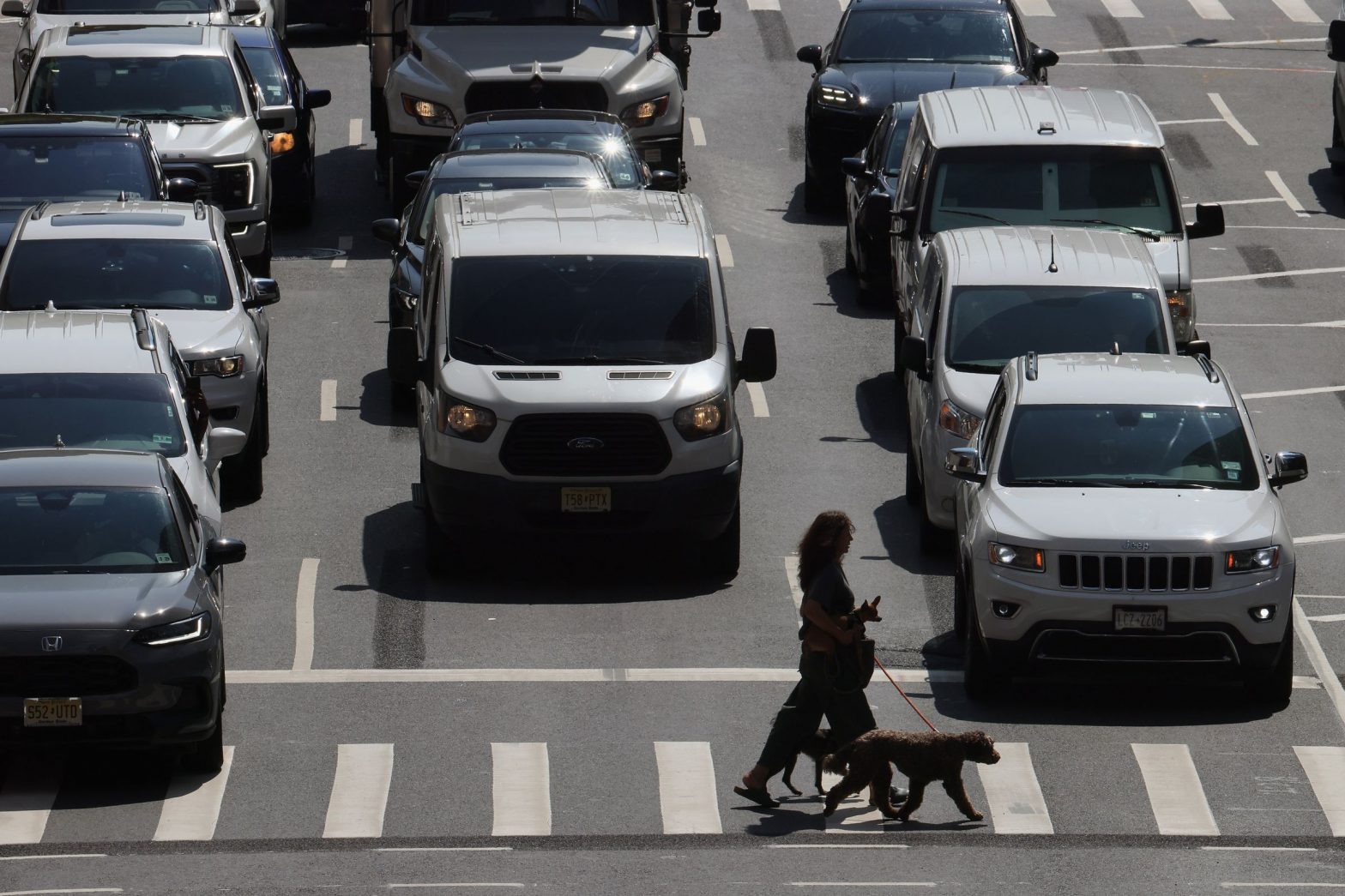/
A new rule has been proposed that could rein in excessively large trucks and SUVs.
Share this story
:format(webp)/cdn.vox-cdn.com/uploads/chorus_asset/file/25614535/2169610326.jpg)
This week, the US National Highway Traffic Safety Administration (NHTSA) stunned safety advocates by proposing new vehicle rules that it says will help reduce pedestrian deaths in America. The new rules appear aimed directly at the trend of increasingly massive SUVs and trucks, which have been shown to be more deadly to pedestrians than smaller and midsize vehicles.
Never in its 50-plus years in existence has the regulator issued new rules for automakers requiring them to change their vehicle designs to better prevent pedestrian fatalities. If enacted, the new rules could change how vehicles are designed in the US — permanently.
“It’s good to see NHTSA acknowledge that a myopic focus on pedestrian detection — which is imperfect — is no substitute for actually regulating car bloat,” said David Zipper, a senior fellow at the MIT Mobility Initiative and a Verge contributor.
In recent years, NHTSA has issued a handful of new requirements aimed at reducing the number of pedestrian deaths. Earlier this year, the agency announced that automatic emergency braking would be required in all new vehicles. It also updated the New Car Assessment Program (NCAP), also known as the five-star safety rating, to account for technology that can help reduce pedestrian injuries and deaths. But it’s never before taken aim at vehicle design.
The rules announced this week would update the Federal Motor Vehicle Safety Standards (FMVSS), the government’s bible for everything that’s required in a new vehicle before it’s sold — from steering wheels to rearview mirrors — to set testing procedures to simulate head-to-hood impact, with the aim of reducing head injuries. If enacted, automakers will have to test their vehicles using crash test dummies representing adult and child pedestrians for the first time. NHTSA says the changes could save up to 67 lives every year.
“The US has never used pedestrian crash test dummies officially,” said Angie Schmitt, author of Right of Way: Race, Class, and the Silent Epidemic of Pedestrian Deaths in America. “I thought they were going to continue to avoid doing that even though Congress had sort of told them to do this — but apparently not.”
The proposed rules come amid a deadly period for pedestrians in this country. Each year, cars kill roughly 40,000 Americans. But while automakers have become very good at protecting people inside of vehicles, they have essentially neglected the safety of people outside of them.
SUVs and trucks, two of the most popular segments in the US, have become larger and heavier than ever before. In 2023, 31 percent of new cars in America weighed over 5,000 pounds (2.27 tons), compared to 22 percent in 2018, according to a recent investigation by The Economist. And with the shift to electric vehicles, many of those vehicles have become even heavier. The Ford F-150 Lightning has a curb weight of around 6,500 pounds, roughly 60 percent heavier than its gas equivalent.
Meanwhile, pedestrian deaths have skyrocketed in recent years. Between 2013 and 2022, pedestrian fatalities increased 57 percent, from 4,779 to 7,522, NHTSA reports. In 2022, 88 percent of pedestrian deaths occurred in single-vehicle crashes.
:format(webp)/cdn.vox-cdn.com/uploads/chorus_asset/file/25614614/2167817977.jpg)
“I think it will exert positive pressure,” Schmitt said of the new proposal, “and maybe rein in some of the industry’s worst excesses.”
The shape of a vehicle, especially the hood, also plays a critical role in determining whether a pedestrian can survive being struck. Vehicles with hood heights of more than 40 inches and blunt front ends angled at greater than 65 degrees were 44 percent more likely to cause fatalities, according to the Insurance Institute for Highway Safety.
Automakers often point to the increasing use of technology in vehicles — cameras, blindspot detection, automatic braking — to help reduce pedestrian deaths. But rarely do they address the role that vehicle design plays in crash fatalities. That’s because big trucks and SUVs are not only popular but also better moneymakers than smaller vehicles. SUVs have a profit margin that’s 10–20 percent higher than smaller cars because they command a higher price while costing only slightly more to manufacture.
Safety advocates celebrated the news, while also noting that vehicle design is only one piece in a large, complex puzzle to make roads safer. That includes lower speed limits, infrastructure improvements, and increased enforcement of traffic laws. Many note that Europe has already gone much further to protect pedestrians, enacting rules that would prevent many of the largest vehicles produced by US manufacturers from being sold on the continent.
“Considering NHTSA estimates the new standard would save 67 lives a year, it is a step in the right direction, but it still falls behind what Europe has successfully done,” Cathy Chase, president of Advocates for Highway and Auto Safety, said. “Numerous proven solutions must be employed to improve the safety of all vulnerable road users.”
The new NHTSA proposal is an important step, but it’s just the first of many needed to turn this crisis around.
